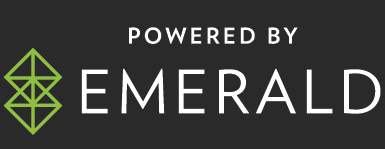By Scott Ryan, TVIQ
The debate about quality and complexity in the CTV supply path has intensified in recent months, driven by downward pressure on pricing and rising IVT rates. The issues are familiar: buyers want supply from trusted rights holders and transparency in the supply chain while also bidding on the most cost-efficient inventory. Measurement vendors, exchanges, and large platforms have responded with new rules and filters that promise to deliver only clean, direct supply. On paper, this looks like progress. In practice, the burden of compliance falls hardest on publishers, and the cost of proving that their inventory is safe has become its own very expensive tax.
Collapsing the supply chain seems like the obvious fix, but until the structural framework of the CTV ecosystem changes and we account for the burden that ALL publishers face, not just the largest streamers, we run the risk of further squeezing revenue for small and mid-sized publishers to the point that they simply cannot survive and grow.
The Distribution Bargain
The first thing to understand about the CTV supply chain is the way it is artificially bifurcated by distribution arrangements. To gain access to viewers through OEMs and major streaming platforms, publishers often give up half of their inventory. Those impressions are then aggregated and resold under the platform’s brand, which allows them to be treated as “direct” supply. This bargain means that in order to monetize any of their inventory and claw back the cost of investments made in content — the very investments that power the streamers — publishers have to give away half of their revenue. Imagine if, rather than competing for inventory via AdX, Google required publishers to pledge half of their inventory just to be crawled for search results, with no ability to control monetization or guarantee they could reclaim the value. The industry would never allow that in search, but in CTV it is table stakes.
Because of this, the original publisher whose content makes the platform viable in the first place is left with diminished control, reduced revenue, and the stigma of being “indirect.” The same stream can appear in the bidstream multiple times, but only the version packaged by the largest distributor is recognized as clean. This imbalance is not a side effect but a structural feature of distributor leverage. The companies that control distribution are rewarded for aggregation, while the publishers that create the content are left carrying the compliance burden.
DSPs tend to bias toward scale — which is why multicalling was once so useful for publishers — so while publishers are giving away half their content and losing their position as the original node in the supply chain, the streamers are using that same content to out-scale them. They siphon more dollars out of the ecosystem that should be finding their way directly to the publishers who created the value in the first place.
The Burden of Proof
Even beyond the loss of inventory, publishers face a long list of requirements before what remains is deemed trustworthy. They must keep app-ads.txt and sellers.json records accurate and up to date across every distributor and app store. They are expected to pass transaction IDs in bid requests, which often requires new server-side ad insertion integrations and ongoing maintenance. They are pushed to provide device identifiers (IFAs) consistently, even when platform rules, privacy regulations, or technical constraints make that impossible. When IFAs are missing, ad servers may generate synthetic or session identifiers, which can then be flagged as suspect. The result is that publishers are penalized for practices that are, in many cases, the byproduct of legitimate privacy protections or distribution realities.
Meeting these requirements is costly. Publishers absorb ad serving fees, CDN charges, and contracts with measurement vendors just to prove that their inventory deserves to be bought. Each layer adds cost and complexity, while the definition of “safe” supply shifts from one report or platform to the next. For smaller publishers in particular, the resources required to meet these tests can wipe out yield.
Placed alongside the distribution bargain, this burden of proof shows how the system is stacked: publishers are diminished both by the inventory they are forced to give up and by the escalating costs of legitimizing what remains.
The Push to Collapse the Supply Chain
Faced with these dynamics, the easiest solution being marketed to buyers is to collapse the supply chain altogether. Reports flagging “suspicious” identifiers, exchange-level policies against resold traffic, and proprietary SPO offerings all point buyers toward the same conclusion: only impressions flowing through a handful of sanctioned pipes should be trusted. Proprietary pathways like ClearLine and OpenPath are framed as the clean solution, as are proprietary methodologies from third-party consultants. They offer a blunt instrument to simplify the ecosystem and reduce risk for buyers, but they also concentrate power in the hands of the very platforms that have defined the rules to begin with.
As concerns about complexity grow, more buyers are educated to demand “only direct buys,” which pushes them by default into these closed pathways. That solves for optics but not for the structural imbalance, and it further entrenches the power of distributors over publishers.
Fixing the Supply Chain Without Collapsing It
Safety and transparency in CTV are non-negotiable, but collapsing the market into a few closed channels is not the answer. The industry needs shared standards for how identifiers are handled, how transaction IDs are passed, and how chains of payment are disclosed. These standards should be open, consistent, and recognized across platforms, not dictated by a single vendor or proprietary pathway.
Publishers must also have a seat at the table in shaping those rules, or else the costs of proving legitimacy will continue to rise, and continue to fall on them alone. Clean reseller marketplaces, which often work with sub-scale publishers and provide alternate sources of revenue, can play a constructive role here. By giving smaller publishers access to funding and demand, they help balance the market while meeting buyer expectations for transparency and accountability.
The debate about suspicious identifiers and indirect supply has value because it underscores how urgent these questions are. But unless the industry embraces open collaboration and consistent standards, the default solution will always be centralized intermediary control. That may deliver cleaner optics for buyers, but it will do so at the expense of publishers, choice, and the long-term sustainability of the market.








